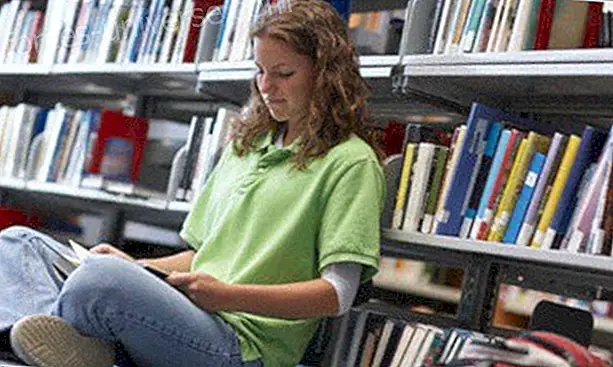
By MATT RICHTEL The eBay technology director sends his children to a nine-grade school in this town. The same do other Silicon Valley megacompany employees such as Google, Apple, Yahoo and Hewlett-Packard.
However, the main educational tools of the school are far from being high-tech: pens and paper, knitting needles and, occasionally, mud. There is no computer there. No screen. They are not allowed in classrooms and the school even discourages their use at home.
Across the country, schools have rushed to equip their classrooms with computers and many education officials say it is silly not to do so. But the opposite view can be found in the epicenter of the technology industry, where some parents and educators have a message: computers and school don't get along.
This school is the Waldorf School of the Peninsula, one of the approximately 160 Waldorf schools in the country that subscribe to an educational philosophy that focuses on physical activity and learning through creative and practical tasks. Those who support this approach say that computers inhibit creative thinking, movement, human interaction and concentration.
The Waldorf method is almost a century old, but the support obtained here among computer specialists brings to the fore the growing debate about the role of computers in education.
“I flatly reject the notion that technological resources are necessary in elementary school, ” said Alan Eagle, 50, whose daughter Andie is one of the 196 children at Waldorf Elementary School; his son, William, 13, attends a nearby high school. "The idea that an application on an iPad can teach my children better to read or do arithmetic is ridiculous."
Mr. Eagle knows some technology. He graduated from Dartmouth in computer science and works in executive communications at Google, where he has written speeches for the company's president, Eric E. Schmidt. Use iPad and Smartphone. But he says his daughter, who is in fifth grade, "doesn't know how to use Google, " and her son is just learning. (Beginning in eighth grade, the school approves the limited use of devices.)
Three quarters of the school's students have parents closely linked to high technology. Mr. Eagle, like other parents, sees no contradiction. Technology, he says, has its time and place: "If I worked for Miramax and made good and artistic films forbidden for children, I would not want my children to see them until they turned 17."
While other schools in the area take pride in their computerized classrooms, the Waldorf school cultivates a simple and old image - blackboards with colored chalk, shelves with encyclopedias, wooden benches full of notebooks and No. 2 pencils.
One Tuesday, recently, Andie Eagle and her fifth grade classmates practiced their knowledge of weaving, performing calculations with wooden needles, balls of wool and tissue samples. It is an activity that, according to the school, develops mathematical, problem solving, design and coordination skills. The final goal: make stockings.
In a nearby classroom, a teacher exercised her third-grade students in multiplication by asking them to imagine that their bodies became rays. I gave them an account - four times five - and, in unison, the children shouted "20" and hit the written number on the board. A classroom full of human calculators.
In second grade, the students standing in a circle practiced language repeating the verses that the teacher recited while, at the same time, they threw and cut small bean bags. It is an exercise whose goal is to synchronize the body and mind. Here, as in other degrees, the day can begin with a recitation or poetry about God that reflects an emphasis on the divine not circumscribed to any cult.
Andie's teacher, Cathy Waheed, who previously worked as a computer engineer, tries to make teaching both very attractive and tactile. Last year he taught the fractions by having children divide food - apples, quesadillas, cake - into quarters, halves and diciseisavas.
"For three weeks we made our way through eating fractions, " he said. "Splitting cake in enough fractions to feed everyone, don't you think it had captivated your attention?"
Some education specialists believe that the campaign to equip classrooms with computers is unjustified since studies do not show positively that this leads to better grades or other measurable results.
Is learning better through cake and tissue fractions? Those who advocate Waldorf pedagogy make comparison difficult, partly because as private schools they don't take standardized tests in primary school. And they would be the first to admit that possibly their students in the lower grades would not obtain good results in this type of tests since, they explain, they do not receive training for a standardized math or reading curriculum.
When asked for evidence of the effectiveness of the schools, The Waldorf School Association of North America (AWSNA) refers to research from an associated institution that shows that 94 percent of students who graduated from Waldorf high schools The United States between 1994 and 2004 continued university studies, many in prestigious institutions such as Oberlin, Berkeley and Vassar.
Of course, that figure may not be surprising, given that these students come from families who value education enough to seek a private school of excellence and generally have the means to pay for it. And it is difficult to separate the effects of low-tech teaching methods from other factors. For example, parents of Los Altos school students say the school attracts excellent teachers who have extensive training in the Waldorf method, which creates a strong sense of mission that may be absent in other schools.
In the absence of clear evidence, the debate is reduced to subjectivity, the choice of parents and the difference of opinion on a concept: motivation and participation. Those who advocate the equipment of schools with technology say that computers can keep the attention of students and that, in reality, young people who have been raised with electronic devices They don't connect without them.
Ann Flynn, director of educational technology at the National School Boards Association, which represents education boards across the country, said that Computers are essential. If schools have access to tools and can afford them, but do not use them, they are scamming our children, he said.
Paul Thomas, a former teacher and associate professor of education at Furman University, who has written 12 books on public education methods, disagreed, stating that a Stripped approach to technology in the classroom will always benefit learning.
"Teaching is a human experience, " he said. Technology is a distraction when we need linguistic, American and critical thinking skills.
And the Waldorf parents argue that true motivation and participation is the result of good teachers who teach interesting classes.
Motivation and participation has to do with human contact, contact with the teacher, with peers, observed Pierre Laurent, 50, who works in a young high-tech company and which was previously performed at Intel and at Microsoft. Laurent has three children who attend Waldorf schools, which had such a favorable impression on the family that his wife, Monica, joined one of them as a teacher in 2006.
And when those who apply for classroom equipment with technology say that children need to accumulate computing time to compete in the modern world, the Waldorf parents reply: What is the hurry, when is it so easy to acquire that competition?
It is super easy. It's like learning how to use toothpaste, Mr. Eagle observed. In Google and in all these places we develop technology that is as easy to handle as possible, almost without using the brain. There is no reason why children cannot learn to use it when they are older.
There are also many parents linked to high technology at a Waldorf school in San Francisco and, a little north, at Millwood Greenwood School, which is not accredited as Waldorf but is inspired by its beginning.
California has about 40 Waldorf schools, a much larger number than in other parts of the country, perhaps because the movement is taking root here, in opinion. n Lucy Wurtz, who, along with her husband Brad, participated in the creation of Waldorf High School in Los Altos in 2007. Mr. Wurtz is the director of Power Assure, which provides assistance to the centers of data to reduce your energy consumption.
The Waldorf experience is not cheap: the annual fees for Silicon Valley schools are $ 17, 750 for kindergarten and eight grades of elementary school, and $ 24, 400 for high school, although Mrs. Wurtz pointed out that it is possible to get financial help. He added that the typical Father Waldorf, who has a wide range of elite public and private schools to choose from, tends to be liberal and of high educational level, with firm opinions on education; These parents also know that when they want to teach their children about technology, they have wide access and knowledge in their home.
The students, on the other hand, say that they don't miss technology, and that they don't neglect it completely either. Andie Eagle and her fifth grade classmates say they occasionally watch movies. A girl whose father works as an engineer at Apple says that his dad sometimes asks him to try games he is debugging. A child plays with flight simulation programs during weekends.
Students say it frustrates them that their parents and relatives stick to both phones and other devices. Aurad Kamkar, 11, said that recently he went to visit some cousins and found himself sitting with five of them playing with their different devices, without paying any attention to each other. Then he started waving his arms and saying, "Hi guys, I'm here."
Finn Hellig, 10, whose father works at Google, says he liked learning with paper and pen - instead of a computer - because he could monitor his progress over the years.
“One can see how unclean his letter was in the first degree. That can't be done with computers because all the letters are the same, ”he noted. "Also, if you learn to write on paper, you can write even if water is spilled on the computer or the power goes out."
Article and image published courtesy of Southern Cross Review (southerncrossreview.org). This article was published on October 23, 2011 in the New York Times with the title of "A Silicon Valley School That Doesn't Compute."
More information
Waldorf Pedagogy in Spain:
Micael Free School, Las Rozas (Madrid): www.escuelamicael.com
Artabán School, Torrelodones (Madrid): www.escuelaartaban.es
Rudolf Steiner Foundation: www.fundsteiner.com






